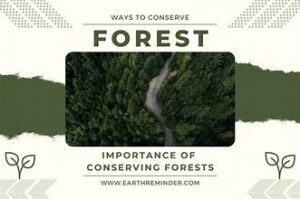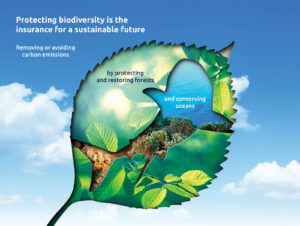introduction
Forests play a crucial role in maintaining ecological balance and supporting biodiversity. They provide habitat for countless species, regulate climate, and offer resources vital to human well-being. However, the accelerating threats posed by deforestation, climate change, and habitat loss necessitate immediate and effective conservation initiatives. This article explores various strategies to protect and sustain forest ecosystems for future generations, emphasizing scientifically backed approaches and practical steps.
The Importance of Forest Ecosystems
Forests are often referred to as the “lungs of the Earth” due to their role in oxygen production and carbon dioxide absorption. They also help regulate local and global climate patterns by influencing precipitation and temperature. Beyond these environmental benefits, forests are home to a diverse range of flora and fauna, many of which are not found anywhere else.
1. Biodiversity Support: Forests host over 80% of the world’s terrestrial species, providing essential habitats and food sources.
2. Climate Regulation: Forests sequester carbon dioxide, a key factor in mitigating climate change. They also influence weather patterns and contribute to the water cycle.
3. Economic Value: Forests provide resources such as timber, non-timber forest products, and medicinal plants, supporting local and global economies.
Key Conservation Initiatives
1. Protected Areas and Reserves
Creating protected areas is one of the most effective ways to safeguard forests from degradation. These areas are designated as off-limits to activities that could harm the ecosystem, such as logging or industrial development.
1.1. National Parks: Designated by governments, national parks offer strict protection against exploitation and promote ecological research and tourism.
1.2. Wildlife Reserves: These areas focus on conserving specific species and their habitats, often with the help of local communities.
2. Reforestation and Afforestation
Reforestation and afforestation are critical strategies for restoring degraded lands and increasing forest cover. Reforestation involves planting trees in deforested areas, while afforestation refers to establishing forests on previously non-forested lands.
2.1. Native Species Planting: Using native species ensures that the reforested areas support local wildlife and are better adapted to the local environment.
2.2. Community Involvement: Engaging local communities in planting and maintaining forests can enhance the success of these initiatives and provide economic benefits.
3. Sustainable Forest Management
Sustainable forest management (SFM) practices aim to balance ecological, economic, and social objectives. This approach ensures that forests continue to provide resources without compromising their health or future productivity.
3.1. Selective Logging: This method involves harvesting only certain trees while preserving the overall structure and function of the forest.
3.2. Certification Programs: Programs like the Forest Stewardship Council (FSC) provide standards for sustainable forest management and certification to promote responsible practices.
4. Anti-Deforestation Campaigns
Combatting deforestation requires both global and local efforts to address the drivers of forest loss, such as agricultural expansion, logging, and infrastructure development.
4.1. Policy Advocacy: Promoting policies that regulate land use and encourage sustainable practices is crucial for long-term forest protection.
4.2. Public Awareness: Educating the public about the importance of forests and the impacts of deforestation can foster support for conservation initiatives.
5. Ecosystem Restoration
Restoring entire ecosystems, rather than just reforesting, addresses broader ecological issues. Ecosystem restoration involves rehabilitating degraded land, improving water quality, and reintroducing native species.
5.1. Habitat Restoration: Efforts to restore natural habitats, such as wetlands and riparian zones, can enhance the resilience of forest ecosystems.
5.2. Biodiversity Corridors: Establishing corridors that connect fragmented forest patches allows wildlife to migrate and maintain genetic diversity.
The Role of Technology in Conservation
Advancements in technology have significantly enhanced conservation efforts, providing new tools for monitoring, research, and management.
1. Satellite Monitoring
Satellite imagery allows for real-time monitoring of forest cover, detecting illegal activities such as logging and fires, and assessing changes in land use.
2. Drones
Drones are used for aerial surveys, mapping deforestation, and monitoring wildlife populations in hard-to-reach areas.
3. Geographic Information Systems (GIS)
GIS technology helps in mapping forest resources, analyzing environmental data, and planning conservation strategies.
Case Studies of Successful Conservation Initiatives
1. The Amazon Rainforest Conservation
Various initiatives, including protected areas, indigenous land rights, and sustainable practices, have been implemented to preserve the Amazon Rainforest. Collaboration between governments, NGOs, and local communities has proven effective in curbing deforestation rates.
2. The Great Bear Rainforest
Located in British Columbia, Canada, the Great Bear Rainforest is one of the largest temperate rainforests in the world. Conservation efforts here include the establishment of protected areas and partnerships with indigenous groups to manage and protect the forest.
Challenges and Future Directions
Despite the progress made, several challenges remain in forest conservation.
1. Climate Change
Climate change impacts forest health through increased temperatures, altered precipitation patterns, and increased frequency of extreme weather events. Adaptation strategies are necessary to help forests cope with these changes.
2. Illegal Activities
Illegal logging, mining, and land conversion continue to threaten forest ecosystems. Strengthening enforcement and international cooperation is essential to combat these activities.
3. Funding and Resources
Sustained financial support is crucial for conservation programs. Innovative funding mechanisms, such as green bonds and corporate sponsorships, can help address this need.
Conclusion
Protecting forest ecosystems is vital for maintaining global biodiversity, climate stability, and economic prosperity. By implementing effective conservation initiatives, engaging local communities, and leveraging technological advancements, we can ensure that forests continue to thrive for future generations. The collective efforts of governments, organizations, and individuals will be key to safeguarding these invaluable natural resources.


